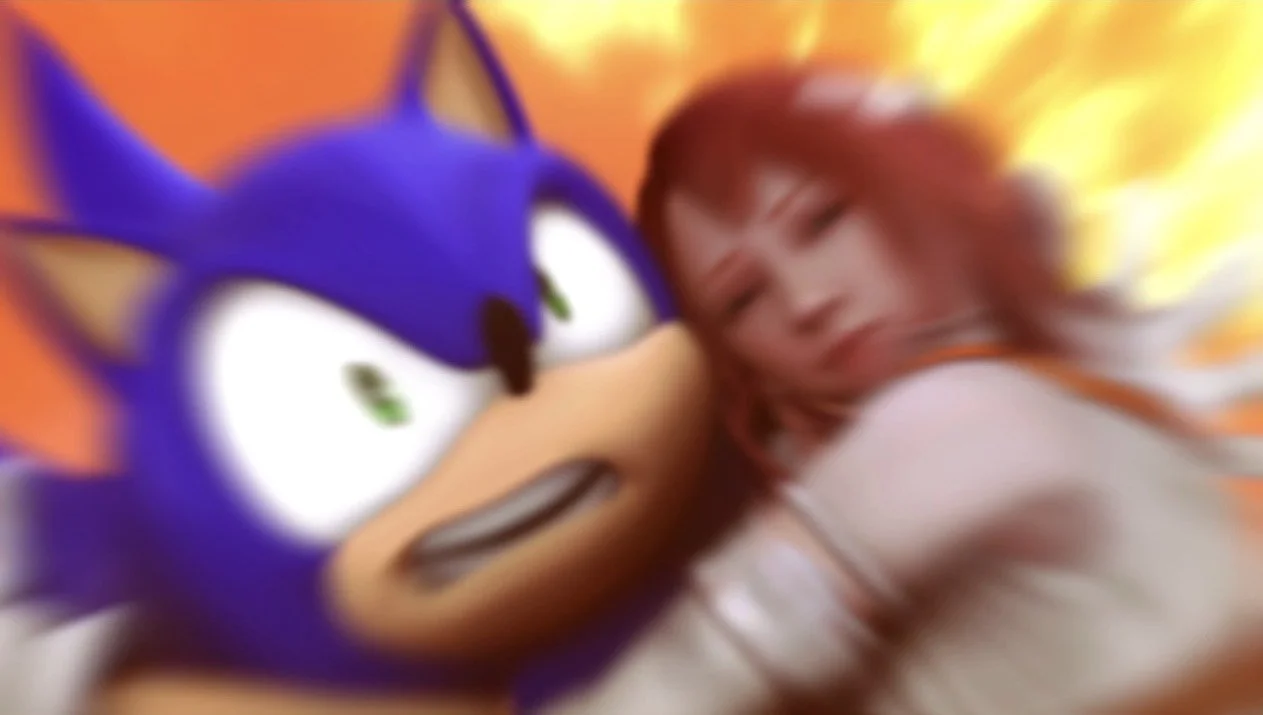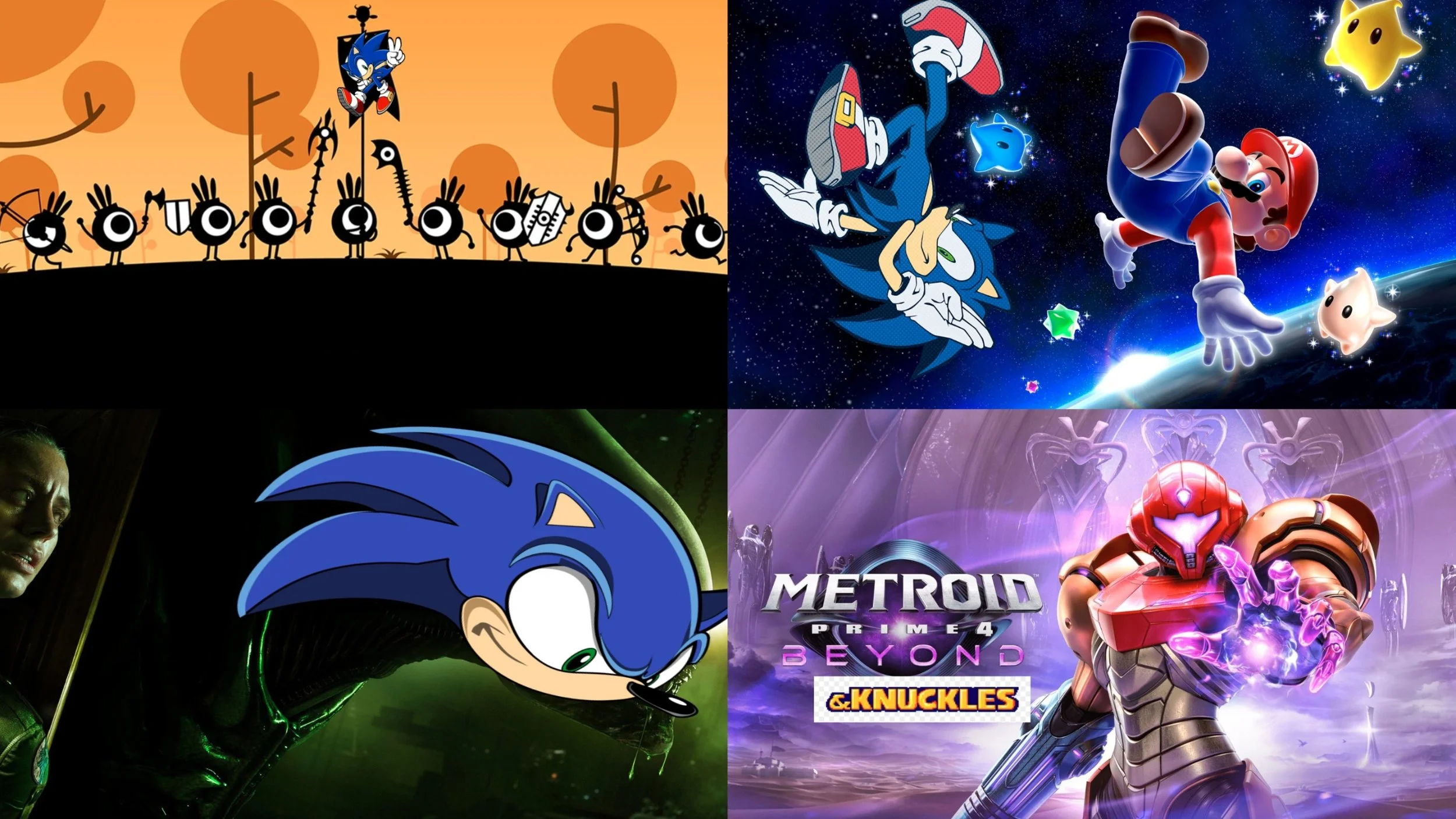sonicmenu | The Storytelling Trick In Sonic Adventure’s Reused Cutscenes
Sonic Adventure was a big deal for Sega and its development occurred in tandem with the Dreamcast itself, even influencing decisions about the hardware’s final state. Reportedly, that development began in July of 1997 and the game was released to the public only 18 months later in December 1998. During that time the team reimagined and restructured what Sonic and his co-stars would look and sound like, how the world they inhabited could form a more cohesive whole, and visited several locations around the globe that influenced some of that decision-making. The team also grew dramatically in size, from an initial 20 to a final 60.
All of this is to say: Sonic Adventure didn’t have as much time to cook as the people making it would have liked. A consequence of that can be seen in the various character stories, which overlap and interweave with one another, causing the player to see the same story sequences multiple times in a complete playthrough. That fact presents a problem. Seeing the same content over and over is, traditionally, a punishment for a player. You were unable to beat this level, so you must start from the beginning. You were defeated by this boss, go back to its first phase. You know the song and dance. Encountering that kind of repetition may be more of a feature than a bug in today’s games, but in 1998 it was grueling.
How could Sonic Team work around the limitations of its development schedule and the kind of game it was trying to make to prevent players from feeling like these scenes were overly repetitive? The answer is a matter of perspective.
The worst boss fight in Sonic Adventure is against Chaos 4. This is because you have to go through the exact same fight three separate times as Sonic, Tails, and Knuckles. The fight itself is basic, mostly a matter of avoiding clearly telegraphed attacks sent out in a random pattern while waiting for the boss to rise above its safety below the water so you can hit its weak spot. Because these three characters all share the fight, they also share the scenes immediately preceding and following it. It’s the scene prior to the fight I’d really like to draw your attention to.
Speaking broadly, the scene involves two of the game’s six protagonists clashing over a misunderstanding, which opens up an opportunity for Dr. Robotnik to swoop in and steal two Chaos Emeralds. He then feeds these to Chaos, Sonic Adventure’s recurring antagonistic force, allowing the creature to transform into its fourth form.
Following me so far? Good.
Each time the player sees this sequence, it is while controlling a different member of that aforementioned trio of protagonists.The dialogue shared between the characters differs each time. An example:
Stills from Sonic Adventure (SEGA, 1999), captured by YouTube channel Gamer’s Little Playground.
The above stills are taken from the initial confrontation. In the first, from Sonic’s perspective, Knuckles has suddenly attacked and demanded the “Emeralds” in Sonic’s possession. Your friend and mine Sonic Maurice Hedgehog takes this opportunity to be about as smarmy as he’s ever been. Which is also true in the second still, which is taken from Knuckles’ story. Only in this version, Sonic comes off as more condescending, calling Knuckles “buddy.” In the third still, from Tails’ story, Sonic is only on the sidelines while Tails is the one who confronts Knuckles. Almost as if the eight-year-old constantly angling to be seen as cool in the eyes of his teenaged best friend might exaggerate his involvement.
This is only one example of several, as the characters do tend to move in and out of each other’s narratives with some frequency. Each time, the scene is slightly different in its framing and dialogue. In writing, there’s a name for this storytelling device: multiperspectivity. The central idea of the technique is that multiple narrators often relate the content of their stories with different motivations or personalities. The result is even the same scene can seem entirely different when it is related by different characters. In our example, Sonic’s story frames him as the too cool hero, Knuckles sees Sonic as a figure that talks down to him, and Tails sees himself as more central to the ongoing adventure than he may actually be.
As the player encounters these scenes, those subtle differences do a lot to inform them about the motivations and ideals of the characters both from their own and each other’s perspectives. The device adds flavor to what would otherwise be repetitive content and allows for the revisiting of scenes to convey more information about the world to the player. Had Sonic Adventure followed director Takashi Iizuka’s original vision of a sprawling role-playing game meant to define the world of Sonic in new ways, I think this would have been utilised a bit more thoroughly. As it is, the limited yet effective use of the narrative technique lends the story of Sonic Adventure a deeper appeal than may be evident at first blush.
What I’m saying, without a hint of irony, is that Sonic Adventure is the As I Lay Dying of video games.









